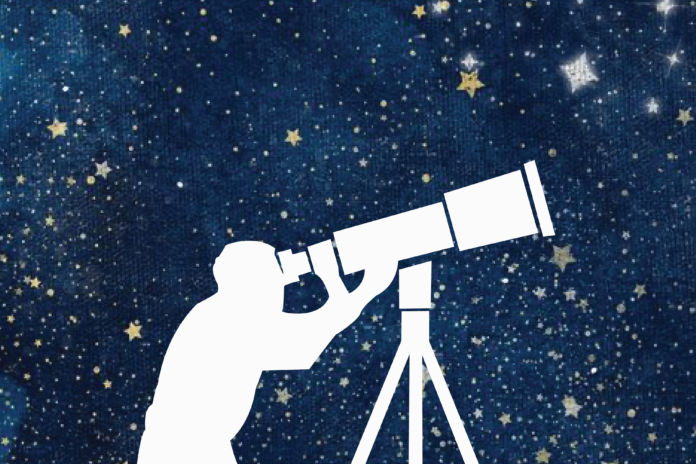The telescope would be the 14th of its kind on the sacred land of Mauna Kea in Hawaii
By RACHEL GAUER— campus@theaggie.org
Lea este artículo en español.
The Thirty Meter Telescope (TMT) is a project that, if completed, would be the first in a new class of extremely large telescopes. Currently, it is planned to be built on the mountain of Mauna Kea, located on the island of Hawaii, and would “allow us to see deeper into space and observe cosmic objects with unprecedented sensitivity and detail,” according to the project’s website. However, the project has received backlash from the native Hawaiian community, who believe that the telescope would be invading sacred land.
The University of California (UC) has invested more than $68 million into the project so far, but student organizations, including the UC Davis chapter of Mauna Kea Protectors (MKP), have called for the UC to halt funding. In late March of this year, a new state-appointed oversight board for the project was put together that includes representatives from astronomical observatories and Native Hawaiian communities. The current prevailing compromise appears to be that TMT will be built in exchange for several other telescopes in the region being decommissioned. However, student efforts remain focused on removing UC funding from the TMT project entirely.
Valeria Cantor Mendez, a third-year community and regional development major, commented on the efforts that the UC Davis community has taken to encourage UC leaders to divest funds.
“Last quarter the [Mauna Kea Protectors] met with Chancellor May along with some ASUCD senators who helped us get the meeting with him,” Cantor Mendez said. “We brought the issue up to him and asked him to intervene in front of the Board of Regents [representing] the UC Davis campus. [We] compromised and he made TMT investment an agenda item for his meeting with the other UC chancellors.”
Cantor Mendez also emphasized a future meeting that she is hoping will be impactful in the divestment efforts.
“The director of the University of California Observatories is going to come to UC Davis this next quarter and he is expecting a group of students to talk to him,” Cantor Mendez said. “He is supposed to listen to us and hear our perspectives, which is something we are definitely looking forward to as MKP at UC Davis.”
Prior to the project, 13 other telescopes of smaller diameters have been built atop Mauna Kea despite opposition from the community. Amanda Wong, a graduate student studying ecology, who was born and raised in Hawaii, expressed her perspective on both the current project as well as the previous projects that have been completed.
“I don’t think it is appropriate for the UC system to continue to be invested in this project, especially with so much pushback from the native Hawaiian community,” Wong said. “With 13 telescopes already, so much hurt has been done and I think enough is enough. There has been a strong stance for years now against TMT from the native Hawaiian community.”
Wong also said that she finds the project hypocritical on the part of the university.
“UC Davis wants to promote and uplift marginalized communities, but by continuing to push for and funding the TMT, they are ignoring the voices of the native Hawaiian students that they’re trying to support,” Wong said.
Cantor Mendez also works for the University of California Student Association (UCSA) and serves as vice chair for Students Enacting Environmental Defense (SEED). Cantor Mendez said that SEED actually selected the UC to divest from the TMT project for their environmental justice campaign this year.
“During the last conference that UCSA had, we decided that SEED should focus on divesting funds from the 30-meter telescope, and instead, investing in indigenous communities,” Candor Mendez said. “The 30-meter telescope is not a new project, and so the goal of getting UC funds away from the project is also not new, but we wanted to bring it into the UCSA space because it is a UC-wide issue.”
As of May 9, the university has not responded to a request for comment.
Kealohi Sabate, a civil and environmental engineering graduate student, encouraged students to learn about the project and the impacts it would have on the Hawaiian community.
“I would like UC students to be more aware that the TMT project is not a good use of funds,” Sabata said. “Native Hawaiians have been trying to fight against the building of these telescopes — now there [could be] fourteen of them and we are still on the same topic and still trying to fight for our native lands and our home. It is really crushing native community voices, especially since it feels like our voices are not being heard.”
Written by: Rachel Gauer — campus@theaggie.org




